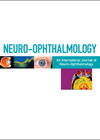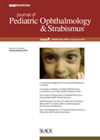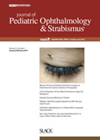You searched for "acuity"
Birmingham Neuro-Ophthalmology: The Birmingham Afferent Course
16 January 2025
Objective: The aim is to review the physiology and the pathology of optic nerve disorders. The course is aimed at ophthalmologists, neurologists and orthoptists of all grades. It will be of value to those preparing for exams or refreshing their...
Birmingham Neuro-Ophthalmology: The Birmingham Efferent Course
17 January 2025
Objective:The aim is to review the physiology and the pathology of eye movements. The course is aimed at ophthalmologists, neurologists and orthoptists of all grades. It will be of value to those preparing for exams or refreshing their neuro-ophthalmology knowledge....
Birmingham Neuro-Ophthalmology Afferent course 2026
15 January 2026
Objective: the aim is to review the physiology and the pathology of optic nerve disorders.
Birmingham Neuro-Ophthalmology Efferent course 2026
16 January 2026
Objective: the aim is to review the physiology and the pathology of eye movements.
Moorfields: Orthoptics for ophthalmologists
1 September 2025
This blended orthoptic course has been designed by experienced orthoptists at Moorfields Eye Hospital and is suitable for all doctors undertaking the FRCOphth Part 2 exams or for anyone wishing to improve their orthoptic skills. Course stuctureThere are six narrated...
Retinal arteriovenous malformation
1 June 2018
| Alexandr Stepanov
|
EYE - Vitreo-Retinal
A 24-year-old Caucasian girl reported to the eye clinic with the complaint of painless decreased vision in her right eye. She had no history of infectious disease, trauma, systemic malignancy or other systemic complaint. Her best corrected visual acuity was...
Usefulness of gonioscopy to investigate cause of corneal oedema after cataract surgery
A 72-year-old man with ocular hypertension presented three months after routine right phacoemulsification and toric intraocular lens (IOL) implantation with a two-week history of an irritated right eye and a sudden deterioration in right vision. His preoperative spherical equivalence was...EyeLogbook
1 June 2016
| David Haider
|
EYE - General
This issue we’re covering the recently updated EyeLogbook (www.eyelogbook.co.uk), the Royal College of Ophthalmologist’s (RCO) online surgical logbook. Back in March 2016 a fully re-designed version of the site was released. Not only does the new version bring a beautifully...
A Handbook of Ophthalmic Standards and Procedures
1 August 2018
| Antonia Slater
|
EYE - Neuro-ophthalmology, EYE - Paediatrics, EYE - Strabismus, EYE - General
This book aims to provide guidance for nurses and healthcare professionals who are new to ophthalmology and acts as an introduction to many of the basic care standards when dealing with the ophthalmic patient. It is in A4 easy print...
Predicting causes and prognosis in cases of optic disc swelling
1 December 2017
| Claire Howard
|
EYE - Neuro-ophthalmology
|
Bilateral, cause, optic disc swelling, unilateral
The authors reviewed 93 consecutive cases with optic disc swelling (ODS) with the purpose of comparing the clinical manifestations and prognosis between cases. The aim was to understand the differences in frequency and clinical features of ODS, relating these to...







